Florida’s Post-Parkland Experiment: To Deter Mass Shootings, Some School Districts Are Creating Their Own Police Departments
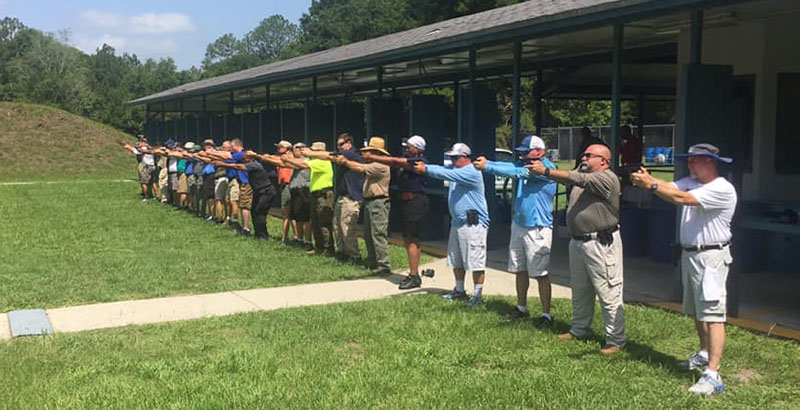
This article was published in partnership with The Trace.
By his own admission, Kenneth Wagner isn’t “a super-religious person.” But the police chief in suburban Jacksonville recently found himself pleading with God — praying enough people would apply in time to fill close to 50 job openings.
Earlier this year, after lawmakers in Florida required school districts to heighten security following a mass school shooting in Parkland, Florida, the school board in Clay County passed a controversial vote to form its own police department.
In about five months.
The district hired Wagner to be its first police chief and tasked him with getting the force off the ground before the first day of school in August. The past few months, he said, have felt like one of those television shows in which contestants get a week to build a house. The job consumed his life. The times he ate lunch during this period — when he had lunch at all — he’d find himself scribbling notes on napkins, little reminders of tasks he’d yet to complete.
“My concern,” he said, “was, ‘Oh my gosh, how am I going to do this?’”
Less than a month after the Parkland shooting in February 2018 that left 17 dead, state legislators passed a law requiring school districts to station at least one armed official, including civilians, on every K-12 campus. Perhaps the boldest response came from educators in Clay County and two other Florida districts, where school officials opted to enter the law enforcement business and create their own police departments to cover more than 100 campuses.
As Florida vastly expands its ranks of campus officers, districts across the nation are watching. After the 2018 school shootings at Parkland and Santa Fe High School, school districts in Georgia and Arkansas created their own police departments, and officials in Denver and Louisville also considered the idea. The increase in school-based departments is occurring against the backdrop of a larger police presence on campuses more generally.
But the renewed enthusiasm for police in schools is not matched by research demonstrating that they’re effective at preventing shootings.
“This happened after the Newtown massacre and after Columbine as well, so it’s a very common reaction,” said Anthony Petrosino, director of the WestEd Justice & Prevention Research Center. “The question is, is it going to cause more harm than good, or is it going to be helpful?”
To build a department from scratch, Wagner had to hire nearly 50 officers, as well as establish policies and form agreements with other law enforcement agencies in the area. He had to buy uniforms, bulletproof vests, guns and radios. And he purchased 45 Dodge Chargers at a cost of more than $1 million.
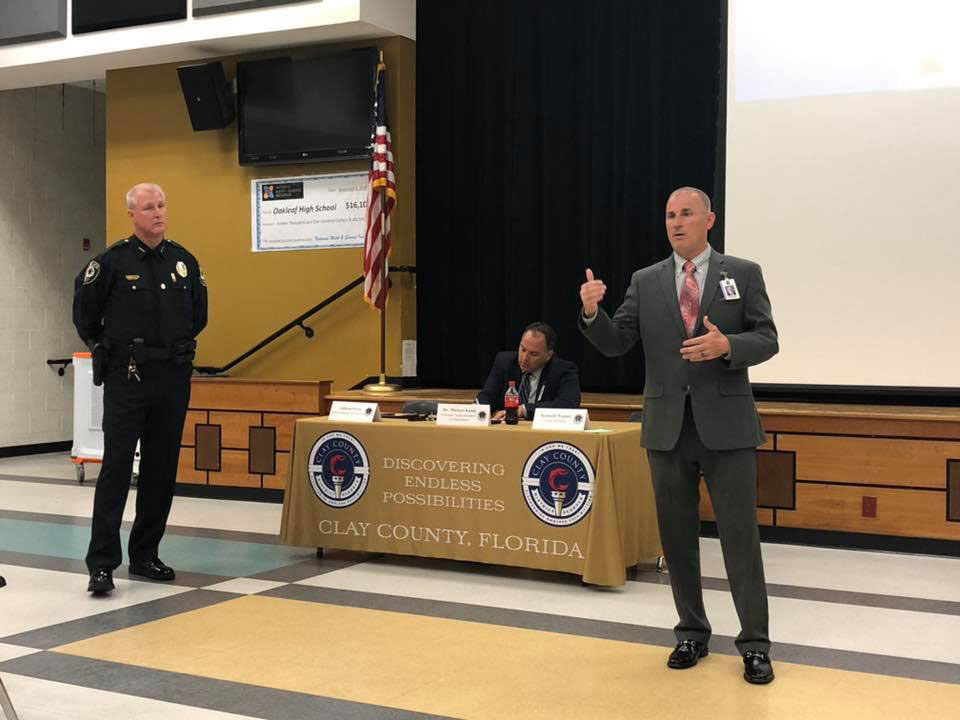
Wagner, a 49-year-old father of two, was drawn to policing at a young age. While he was 18 and working as a security guard, an officer with the Los Angeles Port Police took him on a ride-along and he was hooked.
He spent the bulk of his career at the Clay County Sheriff’s Office, working in myriad roles before supervising the school resource officer program. The sheriff’s office had long stationed school-based officers in district high schools. It’s a role that’s less about “chasing bad guys,” Wagner said, and more about mentoring students.
“A lot of things that go on at their [homes] carry over to the schools and then they’ll report it because they build those relationships with officers in a school,” he said. “It’s more of a parental role, if you will, and it’s very rewarding.”
As Wagner ended his 20-year stint with the sheriff’s office to launch the school district police department, the charismatic chief was up against more than just a deadline. Wagner also had to win the support of his community.
District leaders said developing its own force would save the school system money in the long run, but Sheriff Darryl Daniels, in a series of YouTube videos, blasted the school board for focusing on district finances without making “a big deal about the safety and the security of the kids.” With emotions still running high post-Parkland, some parents demanded a police force able to take on a potential mass shooter and wrote off the district’s soon-to-be-hired officers as “mall cops.”
‘The times have changed’
The idea was contentious from the start.
In August 2018, Clay County residents approved a property tax hike designed to give the district $10 million each year to pay for additional school officers. When the school board weighed a district-run police department in February, board member Ashley Gilhousen argued that the move went against the will of taxpayers. The sheriff’s office, not the school district, is the authority on law enforcement, she said.
“If I’m thinking about who I want to keep my child safe, am I going to trust the sheriff’s department or am I going to trust the school with that?” Gilhousen said during the meeting.
But Gilhousen found herself in the minority as members voted 4-1 to create the department, citing a projected annual cost savings of over $1 million. Superintendent Addison Davis said that after factoring in startup costs during its first year, the savings would come from paying the officers directly rather than continuing to contract with the sheriff’s office.
Yet, at a school board meeting a month later, parents lined up to blast the decision, with some accusing district leaders of putting their children in danger. One woman likened the proposed officers to Barney Fife, the hapless policeman from The Andy Griffith Show. These parents didn’t envision officers as mentors but as rough-and-tumble defenders against would-be gunmen.
Clay County could have complied with the new state law by staffing each campus with “guardians,” who are trained and armed but not sworn police officers. While the district stationed guardians at some schools to work alongside police, officials wanted at least one officer at all 42 campuses and saw an internal police force as the best way to get there.
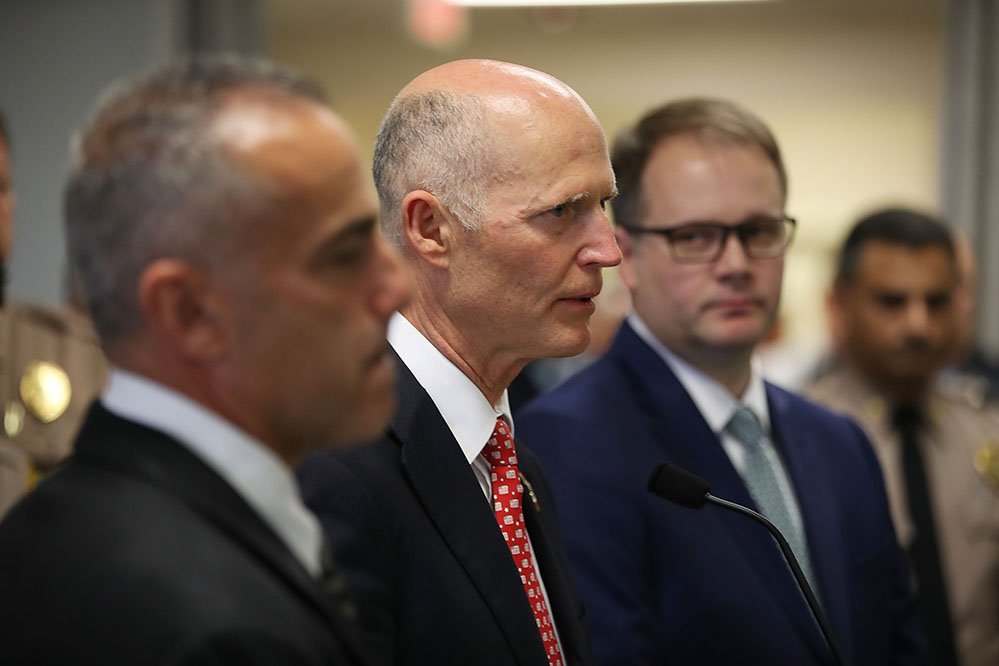
Statewide, more than half of school districts rely on guardians in some capacity, though police officers contracted from local departments remain more common on campuses. Some school leaders have balked at the idea of hiring non-police as guardians— which as of this year can include classroom teachers and other school staff. But the challenge came down to money. The state legislature initially set aside $162 million for the effort, an amount some school leaders said was too small to allow them to assign officers to each campus.
As school launched this year, Broward County — the district that includes Parkland — was the only one that failed to comply with the law, according to the Marjory Stoneman Douglas High School Public Safety Commission, which the state formed after the 2018 shooting. In response, the district took over a charter school that began the school year with an armed guard who lacked state-mandated training.
Still, not all districts responded to the mandate by hiring guardians. Miami officials, for example, hired additional officers at its school district department, which has stationed police on campuses since the mid-1980s. While most districts across the state continue to rely on local law enforcement agencies to station police in schools, Clay was joined by two other communities — Sarasota and Jackson counties — in launching school police departments.
In Sarasota, school leaders began to put officers in elementary schools last year and expanded to middle and high school campuses this year. Still, the launch was rocky and, as in Clay, inspired resistance from the county sheriff and parts of the community. Just three months after the department opened, it underwent a leadership shake-up; its chief was reassigned as efforts to get the department off the ground faltered.
Timothy Enos, previously a school resource officer for the county sheriff, was hired to lead the department. That hire, Sarasota Superintendent Todd Bowden said, got the process back on track.
“There’s a level of trust” between Enos and the sheriff “that is not built solely on a résumé; it’s built based on years of interaction,” he said. “Our [initial] misstep was that we hired a chief with a great background but no local ties, and I think that our implementation initially suffered because of it.”
For Davis, the Clay superintendent, the decision to create an internal police department was part of a natural evolution. “When you think of education, you don’t think about law enforcement,” Davis said. “But the times have changed.”
The ‘naysayers’
In the 1970s, police officers were stationed in just 1 percent of America’s public schools. But they became more common in the late 1990s, amid growing national concern over juvenile crime and school violence. By 1997, 22 percent of schools had officers on site.
By the 2015-16 school year, 43 percent of public K-12 schools had armed law enforcement officers on campus, including 71 percent of high schools, according to federal data. The Parkland shooting sparked renewed interest in school policing.
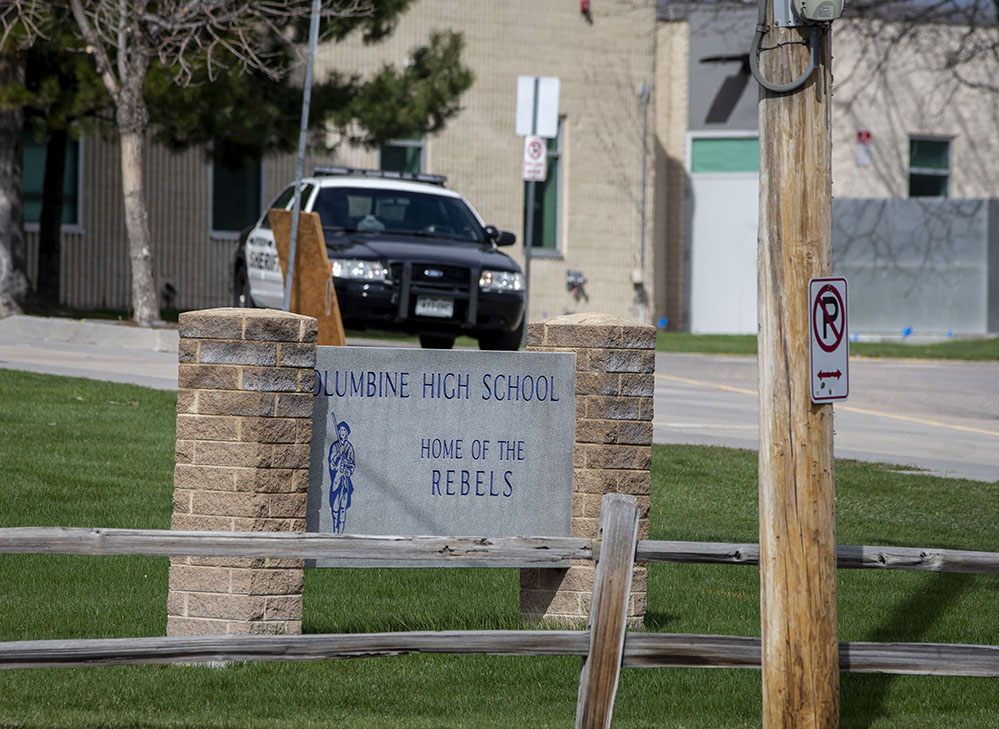
A 2013 report by the Congressional Research Service, published post-Sandy Hook, noted the limited body of research that exists on the effectiveness of school resource officers and questioned the rigor of studies that did exist. Research on school-based policing, it said flatly, “does not address whether their presence in schools has deterred mass shootings.”
Beyond anecdotes, there’s no evidence that the presence of armed officers on campus make schools safer, according to a recent WestEd report co-authored by Petrosino.
The attention paid to school safety following the tragedies is belied by the fact that school shootings remain statistically rare. In fact, federal education data indicate that campuses have actually become safer in recent years.
Among those who see a benefit in district-run law enforcement is Curtis Lavarello, executive director and CEO of the national School Safety Advocacy Council, who has worked in Florida as a school resource officer for a municipal police department and a district-run agency. District-run police departments have a “one-up” on local sheriff’s offices and municipal police departments, he said, because “100 percent of the mission statement is keeping kids safe.” If there’s an off-campus robbery, he said, an officer employed by a school district won’t be pulled from campus to respond. Officers at district police departments are often more committed to the schools’ mission, he said.
“Those officers that come to work for school district police departments typically do so because they have a desire to work around young people in the school setting,” he said.
Enos, Sarasota’s new school police chief and executive director of the Florida Association of School Resource Officers, said district-run agencies often come with cost savings. They also provide autonomy for the district to enact its own policies and select officers.
But school-based police — whether they’re employed by districts or local law enforcement agencies — have their share of critics, many of whom argue that the presence of school resource officers increases the chances of harsh consequences for students of color, who are disproportionately arrested in schools across the country. In fact, some civil rights groups say police should be removed from schools altogether.
Nationally, black students represented just 15 percent of the student population during the 2015-16 school year but 31 percent of students referred to law enforcement or arrested at school, according to the most recent federal education data. Meanwhile, 49 percent of the student population is white, yet white students accounted for 36 percent of those with law enforcement interactions.
Forceful encounters between school police and students have fueled the debate. Such a situation played out in Duval County, where Davis, the Clay superintendent, previously oversaw an internal police force in place for more than a decade.
Earlier this year, an officer was terminated after a district investigation found that he used excessive force during an interaction with a student at Robert E. Lee High School. A video of the incident appeared to show the officer picking up the student by the neck and throwing her to the ground. The officer, the district said, “did not have lawful justification to physically restrain the student, and when he physically placed the student up against the wall and used his hand to hold her around her neck, his actions were excessive and unnecessary.” The officer had previously been disciplined by the district for failing to tell supervisors he hit a student with his baton while breaking up a fight.
But district policing can come with other challenges. In 2016, when Davis still worked there, former Duval resource officers accused the district of preventing necessary arrests as the district touted a decline in students being charged.
For school safety expert and criminologist Nadine Connell, the dearth of research on the effectiveness of school policing is a primary concern. But there is a growing body of research pointing to the notion that students who attend schools with police are more likely to be disciplined.
She argued that district-run police departments could further increase juvenile arrests because “you’ve literally just put somebody with arrest power in closer proximity to students on a daily basis.”
For Wagner, the new district chief in Clay, that proximity between officers and students is precisely the point. The role of school-based police, he said, is to build positive relationships between children and officers, who frequently serve as youth mentors. Those who argue that school police contribute to a “school-to-prison pipeline,” he said, are “naysayers.”
“It’s amazing what kids will tell police officers — gosh, even what adults will tell a police officer,” he said. “It’s kind of like we’re their clergy at times. So I see no negatives whatsoever. I don’t subscribe to people saying negative things. I think it’s always positive.”
‘Divine intervention’
By the time school began in mid-August, Wagner was pleasantly surprised. The summer ended in his favor: The applications, he said, “just kept rolling in,” and the department got off the ground without any major setbacks.
“I honestly think it was divine intervention,” he said.
Hundreds of applicants applied — some, like fast food workers and security guards, didn’t meet the job requirements. But others had years of experience.
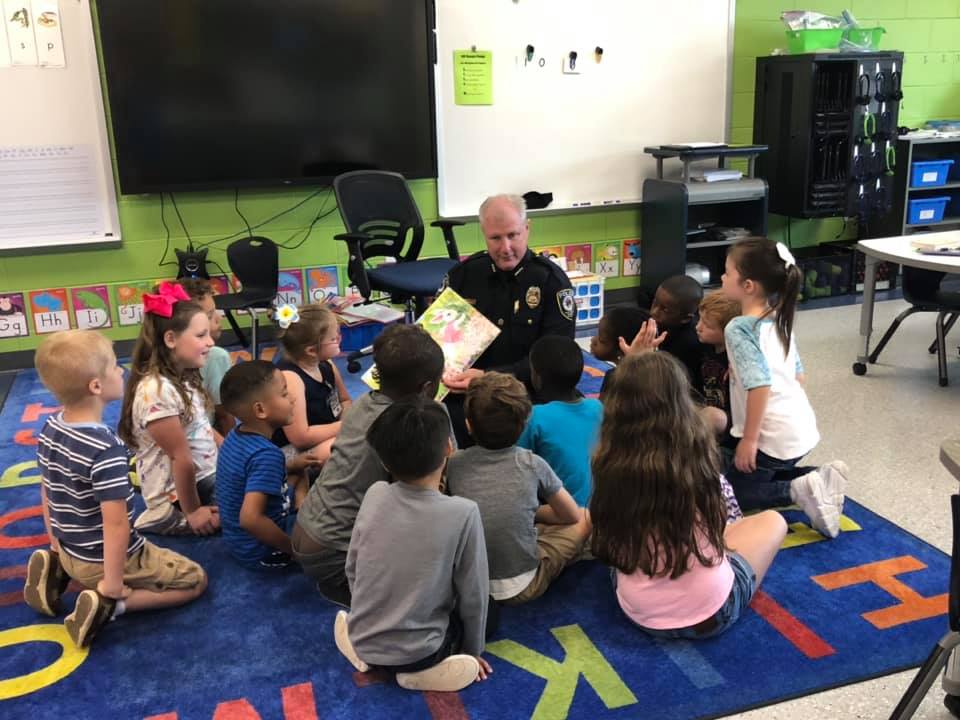
In the end, he was able to fill all 46 openings. One officer had five years of policing experience; another had nearly 40. Several had retired from law enforcement before transitioning to the schools beat. About half had previously served as school resource officers, he said. The others spent the summer in training, learning about subjects including responding to active shooters and addressing mental health emergencies.
Meanwhile, Wagner encountered multiple logistical hiccups. Squad cars arrived “in the nick of time,” and he issued them to staff just a day before classes began in mid-August. The department also lacked computer software to help dispatch officers. Instead, he said, dispatchers were required to work “old-school, like they probably would have done back in the early ’60s, before computers,” tracking officers with handwritten cards.
At the start of the school year, the department made its first arrest, Wagner said, when a background check revealed that a man applying for a district job had an arrest warrant in Virginia for domestic violence.
The district police department’s biggest test lies ahead: Will it be effective?
Get stories like these delivered straight to your inbox. Sign up for The 74 Newsletter


